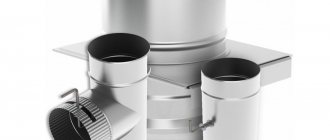- Features of gel biofuel
- Compound
Biofireplace is an ultra-modern decorative fireplace designed for interior decoration of any type. With its help you can decorate any room, and this will require a minimum of effort. Due to the fact that alcohol-based biofireplaces do not require connection to a chimney, the device is actively used in the design of apartments and even small offices. For their part, manufacturers guarantee the safety and reliability of the equipment, which allows you to use the fireplace without harm to health.
Rice. 1. Biofireplace - the highlight of the interior
The eco-fireplace uses special fuel to operate. Few people know, but most of the advantages of the device are associated precisely with the fuel used. Thanks to his discovery, bio-fireplaces were developed, which have become a real trend around the world.
The technology for producing bioethanol was discovered more than 80 years ago, but the worsening environmental situation and the rapid rise in prices for petroleum products are pushing developers to look for new solutions, as well as possible ways to expand application methods.
What is biofuel
The fuel for a biofireplace is bioethanol. The fuel contains a high concentration of alcohol obtained from plant crops. The largest producers of bioethanol are the USA and Brazil, but prospects for the development of the sector also exist in other countries, including Russia, where appropriate production facilities have already been created.
The use of high-quality alcohol in a biofireplace ensures the durability of the device, as well as the absence of harmful emissions. When burned, bioethanol breaks down into water vapor and a small amount of carbon dioxide, comparable to human breath. Thanks to this, a rationale has emerged for a gradual transition to renewable fuels in various industries.
Bioethanol, its combustion, storage and production technology do not harm the environment, which makes the fuel environmentally friendly. Of course, we are talking about high-quality alcohol, manufactured in accordance with international standards and having the appropriate certificates.
Features of alcohol for biofireplaces
To organize a high level of fire protection, it is not alcohol that burns in the fireplace, but its vapor. For these purposes, the fuel block has a porous structure that can quickly absorb liquid. If the structure overturns, there will be no spillage of bioethanol. This is especially true given the mobility and light weight of most of the models offered in the catalog.
Pure bioethanol is odorless, but many manufacturers use special ones to create aroma and saturate the color of the flame. The height of the fire is adjustable: to do this, you need to open the channel wider. In manually controlled models, this is done by moving the damper; in automatic and semi-automatic eco-hearths, all the necessary actions are performed by an electronic system. The fuel contains no solids, so sparks and splashing are excluded.
Rice. 2. Biofireplaces using alcohol do not pollute the environment
All this makes the biofireplace practical and safe, which is why the equipment is loved by ordinary users and interior designers.
Let's sum it up
The technology for producing biofuels was established at the beginning of the last century. The delay in the development of fuel was caused by the discovery of fuel for internal combustion engines based on petroleum products. With the worsening environmental situation, people again remembered the opportunity to obtain safe, environmentally friendly fuel from renewable resources. This contributed to the emergence of fireplaces with decorative functions, including biofireplaces.
Today, everyone can enjoy natural fire. There is no need to obtain approval from utility companies, install a chimney, or regularly clean the fireplace. Bioethanol burns completely in the firebox, releasing a small amount of carbon dioxide and water vapor, which is useful if necessary to humidify the air during the heating season. You can use a bio-fireplace even indoors with children, but do not forget about fire safety rules.
Modern production technologies make it possible to achieve deep purification of the composition from unwanted mixtures and substances. The liquid goes through many tests, and only after that it goes on sale. This is why it is so important to ensure that you have a certificate.
How to choose fuel for a biofireplace? The answer depends on many factors. The products proposed in the biofuel review are high quality products, tested by thousands of customers. Equipment manufacturers often organize their own production of fuel optimized for the company’s equipment, but there are exceptions. You can find out which biofuel is better experimentally, checking the criteria for proper operation. There is always the opportunity to contact an expert to make sure that the liquid matches the specific biofireplace model.
Types of biofuels
In the eco-center, fuel has 2 forms:
- liquid;
- gel.
In both cases, alcohol is implied, but it is in a different consistency. Most models of eco-fireplaces are refilled with liquid bioethanol, which has more advantages than the gel structure.
Features of gel biofuel
If liquid biofuel is bioethanol of plant origin, then gel fuel is isopropyl alcohol. The gel has a transparent color and is not fluid. Manufacturers use thickeners to create the required consistency. The substance contains various additives that affect the color of the fire and the smell, as well as sea salt. The flame has a rich yellow color, and the combustion process is accompanied by the crackling sound characteristic of firewood, which is provided by grains of salt.
The gel is not filled into the tank. It is enough to place the can of fuel in the required place, remove the lid and ignite the vapors. Putting out a fire is as easy as closing the jar with a lid. If it is necessary to increase the size of the flame, several separate packages are installed nearby. The peculiarity of using gel fuel ensures its widespread use in home-made structures. Thanks to this, even a hearth made with one’s own hands has high fire safety and is harmless to the environment and humans.
Rice. 3. Biofuel in gel form
Features of liquid bioethanol
The liquid consistency is much more comfortable when used in home decorative fireplaces. Manufacturers provide convenient refueling without the need to disassemble the fireplace. Filling the tank is allowed only after the firebox has cooled down, therefore, to ensure uninterrupted operation of the eco-fireplace, it is possible to connect tanks for resupplying fuel. The device can be installed in office spaces thanks to the use of pumps in the system. These properties simplify cleaning and maintenance of the fireplace, which is especially important for fixed built-in models.
Bioethanol has high efficiency, but low heat transfer. The combustion temperature of the vapor is in the range of 300-400 degrees, which facilitates the thermal insulation of the walls of the structure. Developers often cover the fireplace with a glass casing or viewing window that prevents people from getting burned. This is an important advantage of equipment installed in rooms where there are children and pets.
3.Which fuel is better?
Which biofuel burns longer? Does it weather or not? What does the flame look like? We conducted 3 tests, the first on the rate of weathering, the second on the combustion of biofuel without filling the fuel block, the third on combustion with filling the fuel block with ceramic wool. What we got:
- 1Over the course of a day, 100 ml of each biofuel evaporated by 90%, only No. 1 “ZeFire” and No. 4 “Profit” had a slightly larger remainder than the others.
- 2When burning fuel in a block without filler, the leader was sample number 3 “LuxFire” - it lasted 43 minutes 58 seconds, the fastest burning was sample number 5 “FireBird” 38 minutes 40 seconds, the other three participants were 3-4 minutes behind the first .
- 3When testing the combustion of biofuel with filling, the longest burning was sample No. 1 “ZeFire” 1 hour 44 seconds, in second place was sample 4 “Profit” 57 minutes 30 seconds, in third place was sample 5 “FireBird” 57 minutes, in fourth place was sample 2 “Fanola” 55 minutes 30 seconds and on the fifth - sample 3 “LuxFire” 55 minutes. But it is worth clarifying that when using ceramic wool, you have to pour more fuel into the block.
Bioethanol production technology
Biofireplace fuel is a renewable energy source, and the cycle is as follows.
- Bioethanol is released from plants, which is subsequently used for biofireplaces.
- When ethanol burns, it breaks down into carbon dioxide and water.
- Carbon dioxide is absorbed by plants during photosynthesis.
Plant crops with a high content of starch and sucrose are suitable for fuel production.
The following raw materials are used:
- corn;
- sugar beets and cane;
- potato;
- cereals.
In addition, the list is expanding with crops growing in limited areas or in certain climatic conditions. Therefore, manufacturers have a good raw material base anywhere in the world.
Rice. 4. Natural circulation of substances
Production stages.
- Primary preparation of raw materials. At this stage, the plants are sifted and crushed.
- Fermentation of plant substrate. Enzymes are added to the crushed raw materials to break down polysaccharides to form a substance with an alcohol content of 15-20%.
- Rectification of the composition. At this stage, the mixture is divided into fractions.
- Purification of the mixture from impurities using physical and chemical methods.
- The resulting liquid is distilled to increase its alcohol content.
- Denaturation of pure alcohol. The resulting material is diluted with water, adding substances that change the taste of the liquid. This is necessary to prevent human consumption of bioethanol. The share of additives is up to 1%.
The complexity of production explains the high cost of the product. The difference between high-quality alcohol and low-quality alcohol is the degree of filtration, the absence of fusel oils and the proportion of pure ethanol in the liquid.
Compound
Branded biofuel is, in fact, considered pure alcohol without taking into account a small amount of water and additives. The addition of water is explained by the hygroscopicity of the substance.
In most cases, the composition of biofuel for a biofireplace is as follows:
- bioethanol – 95-97.5%;
- water – 3-4%;
- additives – 0.01-2%.
When choosing fuel, pay attention to the presence of a certificate. This guarantees compliance with standards, maintaining proportions, which means high quality. Recently, cases of sales of counterfeit and low-quality fuel have become more frequent, which can cause a decrease in the operating comfort of equipment and its breakdowns. Therefore, it is recommended to order alcohol for bio-fireplaces from reliable suppliers.
Rice. 5. An example of a fireplace using branded fuel
Fuel requirements
You can identify low-quality products yourself. To do this, you need to monitor the combustion and its efficiency. One of the main quality indicators is compliance with the operating time of the equipment - bioethanol consumption. For mechanical and semi-automatic fireplace models, the normal indicator is 4-8 hours per 1 liter of fuel; for automatic biofireplaces this characteristic may be longer. In any case, you should first familiarize yourself with the instructions and characteristics of the fireplace in order to more accurately determine the normal flow rate.
Other signs of high-quality alcohol are:
- golden yellow color of fire, for gel – orange;
- uniform combustion and flame height;
- absence of soot, soot and other deposits on the burner, body and glass;
- no unpleasant alcohol odor during operation.
The standard heat transfer of 1 liter of composition fluctuates at the level of 6-7 kW, which is enough to slightly increase the temperature in the room if the equipment is correctly selected in terms of power.
How to add alcohol to a biofireplace
The procedure for refueling the fuel block of an eco-fireplace is simple, but requires compliance with established rules. You can study them in the instructions for the equipment. For these purposes, you will need a funnel and bioethanol itself. It is important to evenly distribute the liquid along the entire line of fire so that it is completely and quickly absorbed by the porous structure.
Rice. 6. Standard method of refueling a biofireplace
Rice. 7. Refilling the fuel block with a special hole
Refueling requirements.
- Do not allow fuel to overflow.
- If drops of biofuel are found on the firebox, they must be removed with a dry cloth or sponge.
- Do not allow fuel to spill in the immediate vicinity of the fireplace.
- Refuel the equipment only after it has cooled down.
- Before igniting the firebox, close the bioethanol tank and put it in a storage location.
- Use a lighter with a long spout to ignite to avoid burns.
Developers of eco-fireplaces recommend calculating the required burning time so that the filled fuel has time to burn out completely. This will eliminate the evaporation of vapors and make the device safer.
Gaseous
Gaseous fuels obtained from biological mass include biogas, biomethane and biohydrogen. This is a future alternative to natural gas, gasoline, and kerosene.
Biogas and biomethane
Biogas is a gas that is produced from energy crops, poultry manure, sewage, slurry and/or organic by-products. When subsequently processed into biomethane, carbon dioxide and hydrogen sulfide are removed and the remaining product is compressed (densified). It is well suited for vehicles converted to run on natural gas. Biomethane is also used to replace gasoline.
Biohydrogen
Biohydrogen production is based on biological or chemical processes. On a laboratory scale, it is produced by anaerobic digestion. From energy-rich organic compounds (proteins, carbohydrates, fats), bacteria synthesize H2 along with CO2.
On an industrial scale, biohydrogen is produced by thermochemical treatment (gasification or pyrolysis) and steam reforming from:
- biomass (wood, straw, hay, etc.),
- other bioenergy carriers (biogas, bioethanol, etc.)
The second way to produce biofuels is by using living biomass (eg, cyanobacteria, algae). During certain metabolic processes (photosynthesis, nitrogen fixation), hydrogen is produced by certain enzymes, such as nitrogenase or hydrogenase.
Benefits of branded biofuel
Let's summarize everything that has been said so far in order to compile a list of the advantages of using bioethanol in biofireplaces:
- environmental friendliness;
- safety for humans;
- fire safety;
- does not emit harmful substances;
- does not require the construction of a chimney;
- non-toxic;
- absence of soot, smoke, soot and unpleasant odor;
- naturalness of fire;
- comfortable operation of the equipment;
- simple rules for use and refilling;
- ease of cleaning;
- renewable form of energy.
The properties of alcohol are expanded by the additives used by the manufacturer. These can be color enhancers, flavorings, and in the case of gel fuel, sea salt, which creates a crackling sound when heated, eliminating sparks. All this is provided by branded biofuel that has quality certificates.
Rice. 8. Bioethanol Fanola from Planika: safety confirmed by TUV Rheinland Group
Disadvantages of alcohol in biofireplaces: user reviews
Studying the comments of the owners of biofoci, one can notice a certain trend associated with negative operating experience. The wrong choice of bio-fireplace in terms of power or installation location brought inconvenience instead of the expected comfort.
Let's list the main complaints:
- tearfulness;
- a noticeable increase in temperature in the room;
- the appearance of an alcohol smell from disconnected equipment;
- oxygen burning;
All this indicates the wrong choice of model or location - even if you use high-quality fuel, the problem cannot be solved. In most cases, the reason is the purchase of high-power equipment or non-compliance with operating rules.
If we talk about biofuel itself, then there are no problems with it when branded fuel is used. Filling the fireplace with counterfeit fuel and fuel made using an “artisanal” method is a different matter. In this case, there is a risk of harming your own health.
“Symptoms” when using low-quality alcohol:
- tearfulness;
- Pain in the eyes;
- lack of oxygen;
- sore throat;
- cough;
- runny nose;
- headache;
- dizziness.
And these are not all the options. People with chronic respiratory diseases demonstrate particular sensitivity in such situations. Substances released during the combustion of low-quality alcohol can provoke an allergic reaction.
Rice. 9. The appearance of a headache while using an eco-fireplace is a sure sign of low-quality fuel
If you suspect that you have purchased low-quality ethanol for the fireplace, you must turn off the fireplace, blocking the access of oxygen to the burner. After this, you need to open the window and thoroughly ventilate the room.
It is impossible to reproduce the technology for producing real high-quality bioethanol at home. Moreover, the processes have nothing in common. Making bioethanol “with your own hands” is much cheaper, and it requires a minimum of time. Let's describe the simplest method.
How to make biofuel with your own hands
The simplest technology involves the use of such substances.
- Ethanol is medical alcohol. Sold in any pharmacy, it is cheap.
- Refined gasoline for lighters. Choose a colorless and odorless liquid.
- Flavoring in the form of essential oils. It is not always used in the mixture.
The creation of fuel is as follows.
- Pour 95% alcohol and 5% gasoline into the tank.
- Add aroma oil - a few drops.
- Shake the mixture thoroughly.
- Fill the tank.
The disadvantage of the resulting composition is its instability. After just a few minutes, the fractions separate, so the liquid cannot be stored. This is the simplest recipe for preparing biofuel, but far from the only one. There are many other production methods that can increase similarity and reduce the cost of the mixture.
The resulting alcohol is quite safe, but it is better to use it in homemade fireplaces, preferably outdoors.
Gel fuel
There is another type of ethanol fuel - gel. Whether someone will try to use it for bio-fireplaces or not is unknown. But just in case, we’ll tell you why this shouldn’t be done.
“Gel fuel is used only in special gel biofireplaces. What it is and how it works, you can read in this article"
The fuel is sold in gel form or in tin cans, from which it cannot be taken out - only set on fire along with the contents. Either in plastic bottles - it is more often used for home fondue pots or for starting a fire at a barbecue.
So, under no circumstances should the latter be poured into the fuel block of a biofireplace running on bioethanol. Especially if you have a fuel block with filler. This gel is very thick, viscous, and if you try to light a fireplace with it, you will get a lot of problems - the filler simply will not absorb the gel fuel, but will only leave stains all over the block. Plus, the bio-fireplace itself is unlikely to light up where it is needed.
“If the fuel block is without filler, you can try pouring gel fuel into it. But just don’t overdo it with the quantity – the consequences are unknown, and the smell of alcohol in the gel fuel is too pronounced.”
Can additives and flavorings be used separately?
This question often arises among device owners. Many manufacturers have provided separate dispenser cells for this, located near the burner. When the walls are heated, the poured essential oil begins to evaporate intensely, which leads to the appearance of a strong, persistent odor. This is not always appropriate: fireplace owners increasingly prefer the absence of foreign odors.
Rice. 10. Flavored biofuel from the Kratki brand
As for ready-made additives, it is recommended to use only those that are designed specifically for fireplaces and bioethanol. In such cases, it is more rational to buy biofuel with a smell than to dilute the liquid yourself. This ensures that the positive properties are maintained without risks.
Operating rules
When refueling, remember that the fuel tank should be filled to a maximum of 30 percent. Besides:
- add ethanol only after the device has cooled;
- if the composition was accidentally spilled, immediately wipe the puddle with a dry cloth;
- do not allow children to operate the fireplace;
- after extinguishing, the remaining liquid from the tank is always drained;
- it is allowed to add essential oils to the fuel, but in the amount of just a few drops;
- ethanol cannot be diluted;
- If you have any diseases of the respiratory system, you should consult a doctor before purchasing a biofireplace.
Biofireplaces using gasoline or alcohol: which is better?
Bioethanol is not the only type of biofuel used in eco-fireplaces. There are many alternative options that are less popular. Among them there are no biofireplaces running on gasoline. A common analogue of alcohol is biodiesel, often used in European countries.
In the CIS, the most appropriate use of bioethanol is due to the availability of raw materials and production facilities. Therefore, fuel for biofireplaces is easier to purchase and, most importantly, cheaper.
Pay attention to the type of fuel consumed when purchasing an eco-fireplace. It is impossible to use other types of fuel in the fireplace due to the difference in combustion temperature, composition of the substance and principles of operation.











